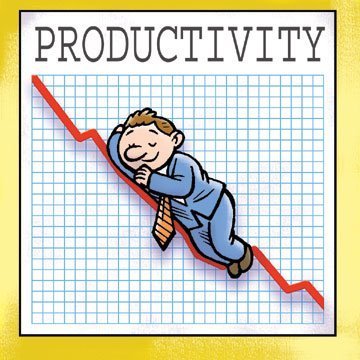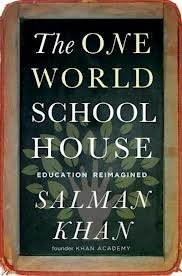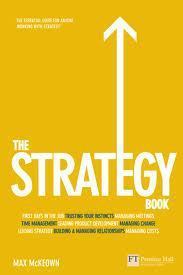Raj Shankar's Blog, page 43
August 3, 2013
Interesting Links This Week: 04-Aug-2013
My top links for this week:
Have you ever wondered how to use social media tools intelligently? Especially if you are an author, are you using the social media tools to find new readers and engage existing reader? If you are not or if you are finding the going tough, here are some thoughts that could help. Link: http://bit.ly/14AT36U
social media tools to find new readers and engage existing reader? If you are not or if you are finding the going tough, here are some thoughts that could help. Link: http://bit.ly/14AT36U
Google SVP Jonathan Rosenberg is one of the important people who practice innovation in the world. How does he ensure his team remains open to ideas and be consistently successful at innovation? Here at a talk given to his alma mater he opens up on what makes innovation a success at Google and how we can take a few lessons to achieve success in innovation ourselves. Link: http://bit.ly/18Doenj
Career advice is always helpful! But when you look at some of the ideas presented here, it looks more like advice to plan life to be lived well and fully. Check it out and take whatever portions you liked. Link: http://bit.ly/14aXxUj


August 2, 2013
Books and Me: The Strategy Book
Author: MAX McKEOWN
Most strategy books are not accessible to the practitioner group. This has made strategy as a subject fairly inaccessible and misunderstood. While this has translated into reasonable business for strategy experts and consultants, it has also stunted the wide spread use of strategy as a tool across institution of every kind. Good strategy can result into good policies and large benefits for not just the institution but the society and world at large. And this book is a step in this right direction.
If the word strategy brings to your mind confusing meanings and ideas, then this is the book to read. Even as a strategy researcher, practitioner and teacher I found the book very enjoyable and practical. Right from aspects such as defining what strategy is, who the strategist is, how strategy gets made, how strategy gets translated into action and how to ensure strategy works is all covered in byte sized chapters with a common structure. Every chapter picks on one specific concept, provides the objective, the context, the challenge, the success and the pitfalls of putting it to practice. A short case in point makes it easier to understand the application in real life. With every chapter is a short checklist for the strategist to ensure he or she is using the right tools and putting the tool to its right use. The closing topic of every chapter is titled “Related Ideas” which leads you to further reading on the specific concept.
What separates ‘The Strategy Book’ from most other books on strategy is that it does not restrict itself to a particular school of strategic thinking. It provides a balance overview, while stating the pros and cons behind all approaches. The last part of the book titled “The strategy book toolkit” provides the author’s selection of about two dozen frameworks from the field of strategic thinking. They contain a good representation of all aspects of strategy. I am sure the book will make it easy to quickly dip in and pick out the aspect of strategy that could worry a practitioner. While it serves as a good primer on strategy for every practitioner it will also serve the larger role as desktop reference for both strategy formulators and practitioners.


August 1, 2013
Perfection Vs Intolerance
Another pair of words that often is confused, misused and abused for the sake of convenience. While many shy away from the concept of perfection saying it is irrelevant in today’s fast changing world - the truth is perfection is not for the masses and perfection can’t be common to the masses. Under the pretext of perfection what people practice today is actually intolerance. So the next time you decide to use perfection as an excuse be sure you have understood the meaning of the two words.
from the concept of perfection saying it is irrelevant in today’s fast changing world - the truth is perfection is not for the masses and perfection can’t be common to the masses. Under the pretext of perfection what people practice today is actually intolerance. So the next time you decide to use perfection as an excuse be sure you have understood the meaning of the two words.
Intolerance is the inability to allow any happening that is against one’s wishes or expectations. Perfection is the power to resist anything that comes in the way of allowing something to become complete. To understand the above statements and their inherent meaning one needs to stay with the words and reflect on them for a while. Try it and you will appreciate the difference. And understanding this in work, art and life could lend a much larger meaning!


July 31, 2013
Ecosystem is never the problem
The only thing that differentiates a human being from all other species, is his ability to make a choice. The  function to think enables him to choose. But seldom does a person put this function to use and actually make a choice. Even when it seems that a choice has been made consciously, it is more often just a misunderstanding. As he often finds himself in a situation where there is but one path available. And in this process he feels pressurized and pushed.
function to think enables him to choose. But seldom does a person put this function to use and actually make a choice. Even when it seems that a choice has been made consciously, it is more often just a misunderstanding. As he often finds himself in a situation where there is but one path available. And in this process he feels pressurized and pushed.
Whenever a student, a professional or an entrepreneur comes to me for mentoring, coaching or brainstorming, they typically feel they are being victimized by their situation. According to them almost all their situations have been created and forced upon them by their environment or what I refer to as the ecosystem.
Every time you blame the ecosystem, you are indirectly making a commitment to remain stuck in the same ecosystem. You now have enough excuses to not act and make choices. You are happy believing you are not the reason for both what’s happening and not happening to you . Not making a choice, you remain stuck and without your own knowledge you also feel secure in such stance.
Take the life of any successful sportsman, professional, scientist or artist and you will very often they were not born into the most suitable or encouraging ecosystem. Most of them left their ecosystem and environments to find places that were more suitable. They were able to uproot themselves from safety and security and put themselves at risks in new environments only because, they were so sure about what they wanted to dedicate their lives to. They had found their reason for existence.
The reason why most people complain about their environment and demand innumerable changes in that environment to make their possibilities more probable is because they have not found their calling. Far from the calling, they also do not have firm conviction on what they ought to do.
So before you blame your ecosystem for tying you down or you find yourself lending your ear to similar outbursts, stop and figure out the veracity of the statement. Find out if you know what your calling is and if you have the courage to do what it takes!


Vedantic Wednesday: Become A Sculptor
It was at a Satsang that I heard this beautiful allegory on how our spiritual pursuit is similar to the act of sculpting.  Have you had a chance to notice a sculptor at work? Patiently with a chisel and a hammer he chips away at the stone. He removes slowly and in a determined manner the portions of the stone and slowly the beautiful shape of a god, a bird or an animal begins to appear. And when the sculptor has finished chiseling away all the unwanted portion – lo behold! here is your stone sculpture – perfect and complete! If you stop a minute and think of it, the sculpture was not added to the stone. It was discovered by removing the unwanted portions off it.
Have you had a chance to notice a sculptor at work? Patiently with a chisel and a hammer he chips away at the stone. He removes slowly and in a determined manner the portions of the stone and slowly the beautiful shape of a god, a bird or an animal begins to appear. And when the sculptor has finished chiseling away all the unwanted portion – lo behold! here is your stone sculpture – perfect and complete! If you stop a minute and think of it, the sculpture was not added to the stone. It was discovered by removing the unwanted portions off it.
In the same way as we move forward in our spiritual pursuit – the understanding we gain about the undivided and unchanging truth works like the chisel removing steadily and slowly the unwanted aspects from our life – like desires, ego, wants, bias etc. As we gain the knowledge, our inner self begins to take shape just like the sculpture. And as the culmination of the spiritual pursuit we begin to see our SELF – our very being perfect and complete! Spirituality does not add anything from outside into us. Like a sculptor it works relentlessly to remove our excesses, the unwanted portion from our pristine SELF.


July 29, 2013
On what do you keep your ‘to-do’ lists?
I keep my ‘to-do’ lists on a well bound soft cover A-5 size notebook. I use this because I keep the notebook with me all  through the day. I use it for my lists and also for taking notes. I tried keeping all of these separately but found that I had to carry so many of them that the very thought seemed discomforting. Keeping one note book helps!
through the day. I use it for my lists and also for taking notes. I tried keeping all of these separately but found that I had to carry so many of them that the very thought seemed discomforting. Keeping one note book helps!
I find people using their phones (smart ones) to keep their lists. I think it is a smart thing to do as it is rare to find one moving around without the phone. So if you are comfortable with the phone, its software and its interface, it is a great tool to use. There are also number of free and paid apps to help you manage lists. The sheer number of apps tells me how many people must still be attempting to crack the code to use this simple but powerful tool. Try them and find one which is most suitable for the kind of lists you maintain. But if you are like some of us who still feel uncomfortable keeping lists and managing lists on the phone, then go back to the earlier option – a right sized notebook and a pen.
Laptops are powerful devices but may not be the best for managing ‘to-do’ lists. I have found people keeping it on their laptops, but somehow find that most people are not all the time with their laptops in power on mode. So when they are travelling or waiting (which are both in tremendous increase) you may find it difficult to add and/or tick-ff items on the ‘to-do’ list. The trouble with trying to remember till you reach your list on the computer is not worth the effort as that’s exactly what we are trying to avoid by using them! So my advice is to find either one of the above options, whichever is more suitable for you and practice it.
Trial and error works till you find the right tool for yourself. But beyond that you must make it a routine to derive maximum benefit. I haven’t come across too many productivity tools that are as simple, so easy and so powerful in enhancing one’s effectiveness and efficiency.
So try it if you haven’t used it or restart it if you stopped using one!
Once you start ticking-off items from your list, its too difficult to stop using one!
Good Luck in getting productive.


July 28, 2013
“Giving Up” to Achieve
When people know what is the challenge, what is the solution, what is needed to make it happen, practically everything to  make something happen – why do they end up not getting it done? This is one of the interesting thoughts that came up in one of my recent sessions with students of a business school. Most of the smart students of management know everything but still struggle even to keep themselves in a job, figure a role that they have always dreamt of, start the business that is always at the back of the mind, and many other things that goes unfinished and undone! It is the same case with entrepreneurs and business owners! Why?
make something happen – why do they end up not getting it done? This is one of the interesting thoughts that came up in one of my recent sessions with students of a business school. Most of the smart students of management know everything but still struggle even to keep themselves in a job, figure a role that they have always dreamt of, start the business that is always at the back of the mind, and many other things that goes unfinished and undone! It is the same case with entrepreneurs and business owners! Why?
I love asking ‘why’ all the time in classes and workshops! There is no better tool in management studies to understand problems better and figure possible solutions better! So when this discussion started I kept prodding at my young smart future managers for a better answer and somewhere along the way, one meek voice said ‘we don’t want to give up’ – and I caught on to it. I loved it when he said it, it seemed like a ‘aha’ moment. So I went on with my leading questions method to running sessions and we ended up identifying so many things that we are bothered about giving up, which is actually the reason why so many smart people don’t end up cracking the challenges for which they seem to know the solution so well. Here are some of the things people don’t like giving up:
past success or failure
inhibitions
mindsets
achievements
assets
resources
ideas
plans
products / services
areas of work
AND THE LIST GOES ON…
While we stopped the discussion and moved on to other topics to be covered in the syllabus – what made me wonder even further was that we knew even this!
The problem with knowing is that, the ‘how’ we know what we know matters! The extent to which you have developed perspectives to look at what you know and accept what you don’t know matters!
Getting back to where we started, we concluded that we can all succeed if we only decide to accept that to gain anything in life, something must be given up. Is there something deeper in this? I think so… And I will leave it for you to think as well…


July 27, 2013
Interesting Links This Week: 28th July 2013
Stumbled onto to these that made their way to my top links this week
Found this a very informative read with a wholly different perspectives for leaders on how they can leverage social media strategy http://www.mckinsey.com/insights/high_tech_telecoms_internet/six_social-media_skills_every_leader_needs
You could use of the 12 to wake yourself up in lieu of dunking another round of coffee http://www.inc.com/kevin-daum/12-non-caffeinated-ways-to-wake-up-at-work.html?cid=em01017week22a&nav=su
A long but highly insightful interview of Cynthia Montgomery the strategic thinker, teacher and writer http://www.strategy-business.com/article/00163?gko=f0c49&cid=TL20130319&utm_campaign=TL20130319 opens up a lot of practical perspective for business owners and academics alike on strategy and business


July 26, 2013
Books and Me: The one world school house
Book Title: The one world school house
Author: Salman Khan
Salman Khan and Khan Academy don’t need introduction to the people who are online. Most people in the world who are concerned with education and who are online would have been exposed to the highly successful teaching approach of Khan academy. In my firm belief, this book written by Salman Khan needs to be read more widely – by everyone who think, talk, associate, dream, use and do work in education
Across the world be it developing, developed or poor the aspect of education seems to be a priority. Most leaders across the world have worries and anxieties about how to make education possible, how to make it available, how to make it effective, how to keep it efficient and how to make it purposeful. A wide variety of thinkers, policy makers, social workers and those in academia, seem to be voicing their concerns over the present state of education. There are also numerous opinions and alternatives being suggested. One such active and radically different player in this group is Salman Khan.
The book is part auto biographical of his journey so far; while being interspersed with his incisive analysis on various aspects of the present education system. You will find interesting answers to the questions such as – how did the current schooling system come into practice? Why are classes one hour each? Why are subjects taught in the current order? Why are children grouped in classes by age? Why do teachers give so much homework? And many such….
There are many suggestions in the book on how technology can make learning more interesting and more effective. How can teachers use these resources and free themselves time from plain lecturing which the students find boring While some of the suggestions made are extremely radical like allowing self paced learning and certifications by schools, many require coherent change across multiple stakeholders and multiple beneficiaries. The education system changes envisaged have far fetched implications on employability, on industry and even to a fair extent on the social structure.
Will all this be possible at the speed envisioned by a few thinkers? Will inclusivity and political decision making find a fair pace to make change happen? Will the current economics of the schooling business be disrupted? Or will a sheer crisis of a much large proportion force change to happen? Whatever it is – the book definitely makes one understand the school education system as it stands today in detail and visualise the changes that it calls for. Every person who is interested in the well being of the society and who thinks education is a tool to make that happen, would find the book an interesting read.


July 25, 2013
To-Do Lists – the ‘how’ matters!
I am one who uses the ‘to-do’ list extensively. I have learnt it from so many successful people who have used it in the past.  Based on the years of using it and getting things done, here are some tips for everyone to consider:
Based on the years of using it and getting things done, here are some tips for everyone to consider:
Ensure that your list contains all types of activities – important, urgent, projects, communications, calls, meetings, etc
They are ideally better to be maintained date-wise. So it must tell you what needs to be done on a particular day.
Let activities on your list be specific. This is to ensure that you can ‘tick-off’ once done (for this you must know when it is done).
The list must be accessible at all times. This is to ensure that you can get things done whenever you get some time. It also helps schedule time to complete tasks.
Its always preferable to make the list every night for the next day.
Don’t drop activities once they get on the list. Take them forward to their logical ends.
This is not an exhaustive list, but may be a good one to start. The benefit behind lists is that they kind of give you a feeling of being on top of things. They give you a positive encouragement every time you ‘tick-off’ an item on the list. They also ensure that you know what is actually getting done.
If you maintain a list initially for a few days, you will realize some patterns:
you have more time than you estimated to get things done
you seem to be always passing some important activities for urgent ones
almost all activities you do are urgent ones (they were important some time in the past but were not done then)
THE BIGGEST OF ALL: You seem to be keeping the most important activity of yours (the one closest to heart) perennially on the list.
Try making lists and you will within days realize the power of this simple tool for yourself. If you have stories to share if your experiences with ‘to-do’ lists (positive and negative) please share – it will help everyone!
Good Luck!!






